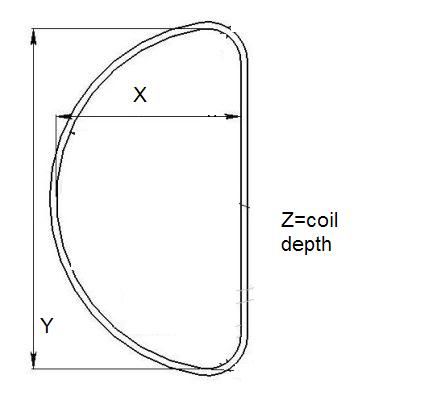Hi,
I'm building my first E-trac coil. I took some measurements of the Minelab stock coil with my RLC meter. Here is what I got when measuring the coil's output pins 1 thru 5:
http://www.coilgun.info/mark2/inductorsim.htm
However I want to build a D-coil. How to componsate for the change in geometer from a perfect circular shaped inductor to a D shape coil? Is the a Wheeler's equilavent formula to model the following parameters (X,Y,Z) as shown in the attachment?

Thanks,
Majesus
I'm building my first E-trac coil. I took some measurements of the Minelab stock coil with my RLC meter. Here is what I got when measuring the coil's output pins 1 thru 5:
- pins 1 & 2 Resistance = 1.1ohm, Inductance = .54mh
- Pins 3 & 4 Resistance = 5.8ohm, Inductance .69mH
- Pin 5 Resistance = open with all other pins (drain pin)
http://www.coilgun.info/mark2/inductorsim.htm
However I want to build a D-coil. How to componsate for the change in geometer from a perfect circular shaped inductor to a D shape coil? Is the a Wheeler's equilavent formula to model the following parameters (X,Y,Z) as shown in the attachment?

Thanks,
Majesus


Comment